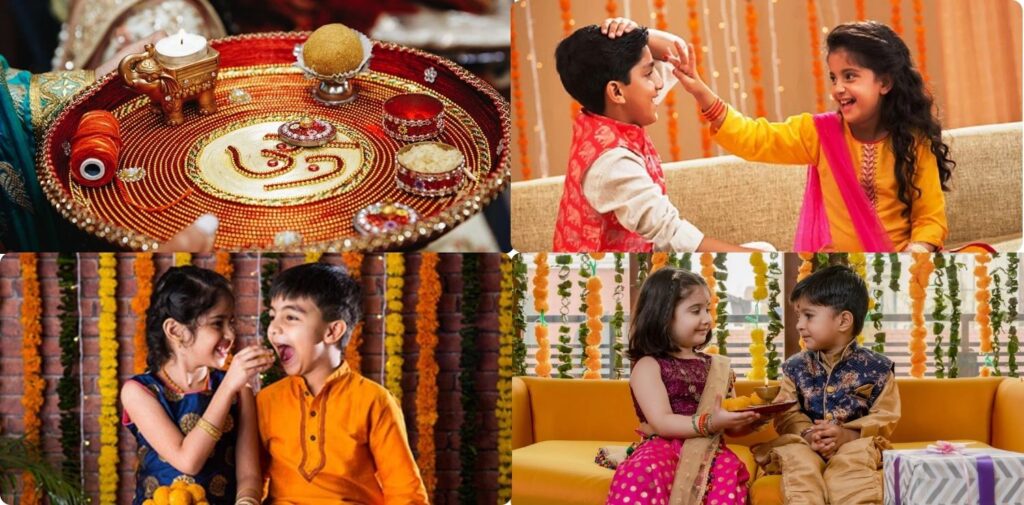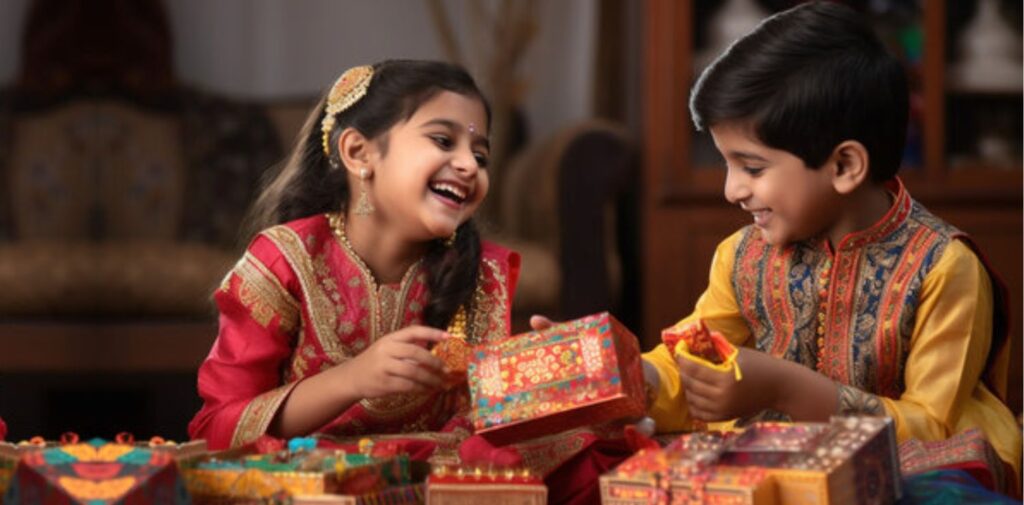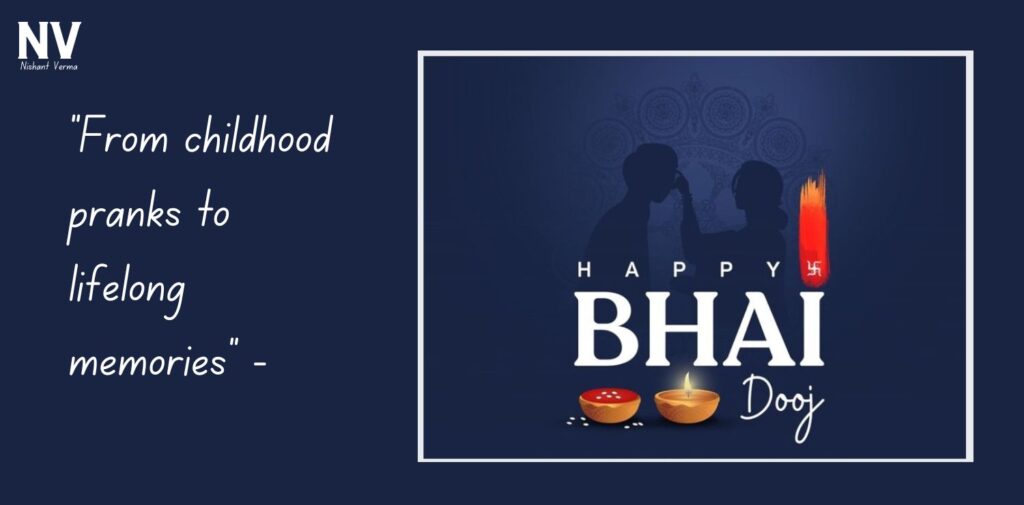Bhai Dooj, also known as Bhaiya Dooj or Bhau Beej, is a significant Hindu festival celebrated primarily in India and Nepal. Observed on the second day after Diwali, this festival is dedicated to the special bond between brothers and sisters. It celebrates not just the love and affection that siblings share, but also encompasses themes of protection, respect, and familial ties. This article delves into the history, significance, customs, and contemporary celebrations of Bhai Dooj.
Historical Origins of Bhai Dooj
The origins of Bhai Dooj are steeped in Hindu mythology, with several legends associated with its celebration. According to one popular tale, the festival traces back to the relationship between Lord Yama, the God of Death, and his sister, Yamuna. After visiting her, Yama was blessed with a promise that anyone who receives a tilak (a ceremonial mark made on the forehead) from their sister on this day would be granted longevity. This narrative underscores the protective nature of the sibling bond and the deep-rooted cultural emphasis on the welfare of one’s family.
Another story linked to the festival involves Lord Krishna and his sister Subhadra. After defeating the demon Narakasura, Krishna returned to his kingdom where Subhadra welcomed him with a special ceremony, marking the occasion with prayers and a sumptuous feast. The festival serves as a reminder of the affection and care siblings should have for one another, promoting unity and harmony.

Significance of Bhai Dooj
Bhai Dooj is not merely a day for siblings to express their love for one another; it holds profound cultural and spiritual significance. The festival emphasizes the importance of familial relationships in Hindu society. Here are some key aspects of its significance:
- Strengthening Bonds: Bhai Dooj reinforces the emotional ties between siblings. It serves as an occasion for brothers and sisters to express their love and commitment to one another. The rituals performed during this festival highlight the importance of these relationships, which are considered integral to an individual’s social and emotional well-being.
- Cultural Identity: The celebration of Bhai Dooj fosters a sense of cultural identity among communities. It is a reminder of the values and traditions passed down through generations, helping younger members of the family understand and appreciate their heritage.
- A Day of Reflection: For many, Bhai Dooj is a day of reflection on family dynamics and the roles siblings play in each other’s lives. It is an opportunity to acknowledge and appreciate the sacrifices made by family members and to reaffirm one’s commitment to nurturing these relationships.

Customs and Rituals of Bhai Dooj
Bhai Dooj is marked by a variety of customs and rituals that differ slightly from region to region. However, the core elements remain the same. Here are some of the most common practices associated with this festival:
- Tilak Ceremony: The festival begins with the tilak ceremony, where sisters apply a ceremonial mark (tilak) on their brothers’ foreheads using a mixture of red vermilion (sindoor) and rice. This act symbolizes the sister’s prayers for her brother’s well-being and longevity. In return, brothers offer gifts and sweets to their sisters as a token of love and gratitude.
- Exchange of Gifts: Gift-giving is a significant aspect of Bhai Dooj. Brothers often present their sisters with gifts, which can range from money to jewellery or clothing. This exchange symbolizes affection and the promise of protection. In some regions, sisters also prepare delicious meals for their brothers, further enhancing the spirit of togetherness.
- Feasting and Celebrations: Food plays a central role in the festivities. Families come together to share festive meals, which often include sweets and traditional dishes. This communal dining experience reinforces family bonds and creates lasting memories.
- Prayers for Well-being: After the tilak ceremony, sisters pray for their brothers’ health and prosperity. In return, brothers express their love and gratitude, often vowing to protect and support their sisters throughout their lives.
- Regional Variations: While the essence of Bhai Dooj remains the same, the way it is celebrated can vary by region. In some parts of India, it is celebrated with distinct regional customs. For example, in Maharashtra, the festival is known as Bhau Beej, while in Uttar Pradesh, it is called Bhaiya Dooj. Each region adds its flavours and traditions to the celebration, enriching the overall tapestry of the festival.

Contemporary Celebrations of Bhai Dooj
In today’s fast-paced world, the essence of Bhai Dooj continues to thrive, albeit with some modern twists. Here’s how the festival is evolving:
- Digital Celebrations: With the advent of technology, many siblings who live far apart are finding ways to celebrate Bhai Dooj virtually. Video calls and social media platforms allow siblings to connect and perform rituals together, despite physical distance. Sending digital gifts or e-cards has also become a popular trend, allowing for the expression of love in a modern context.
- Inclusivity: While traditionally focused on biological siblings, many people are now extending the celebration to include friends and chosen family members. This shift reflects a broader understanding of kinship and the importance of supportive relationships, regardless of biological ties.
- Sustainable Celebrations: As awareness of environmental issues grows, some families are opting for more sustainable celebrations. This includes using eco-friendly materials for decorations, choosing homemade gifts, and preparing traditional meals using locally sourced ingredients. This approach not only preserves cultural traditions but also promotes a healthier planet.
Conclusion
Bhai Dooj stands as a beautiful testament to the enduring bond between siblings. Rooted in ancient mythology, the festival has evolved while retaining its core values of love, protection, and familial ties. As families celebrate this day, they not only honour their relationships but also contribute to a larger cultural narrative that emphasizes the significance of family in Indian society.
In a world that is constantly changing, the traditions associated with Bhai Dooj continue to resonate, reminding us of the power of love and connection. Whether through traditional rituals, modern adaptations, or heartfelt messages exchanged across distances, Bhai Dooj serves as a cherished occasion to celebrate the unique bond that siblings share, ensuring that these relationships remain strong for generations to come.




